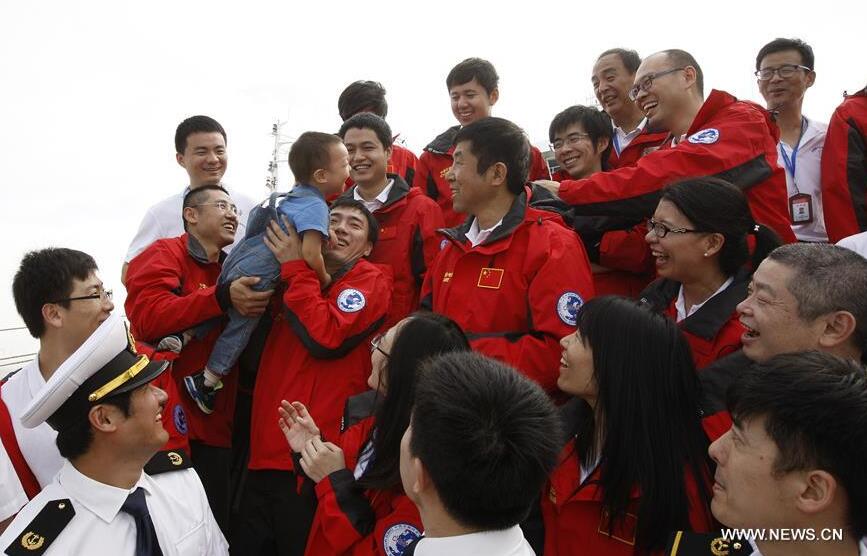Liu Jinwen, a retired primary school teacher now living in Beijing’s Sijiqing Nursing Home, never expected she would have a visit from the Chinese president. But she did, and it changed her life.
![A nurse at Sijiqing Nursing Home combs the hair of an elder resident at the Beijing facility. President Xi Jinping visited there in December 2013 and residents said they were energized by his presence. [Photo/Xinhua] A nurse at Sijiqing Nursing Home combs the hair of an elder resident at the Beijing facility. President Xi Jinping visited there in December 2013 and residents said they were energized by his presence. [Photo/Xinhua]](http://images.china.cn/attachement/png/site1007/20171010/f44d307d90cc1b466ac20c.png) |
|
A nurse at Sijiqing Nursing Home combs the hair of an elder resident at the Beijing facility. President Xi Jinping visited there in December 2013 and residents said they were energized by his presence. [Photo/Xinhua]
|
“It was the morning of Dec 28, 2013. I was sitting reading a newspaper story for one of my friends intently at the hall, and suddenly I realized others turning their eyes to the direction across my head,” said Liu, 74. “I turned back my head and saw President Xi Jinping approaching us.”
Xi sat down in a chair and joined their book-reading activity, she said.
“Xi praised us that we are still studying although we have retired, and he encouraged us to take good care of ourselves and enjoy life,” Liu said. “He looked so easygoing. All of us were so excited.”
Liu said her meeting with the president lasted no more than 10 minutes, after which Xi went to see other elders in the nursing home, but she said it was a great encouragement to them.
“I felt we are not useless people whom nobody pays attention to. I was young again,” she said. “Although we are old, why can we not have an equally colorful life?”
Following Xi’s visit, managers of the nursing home, which has more than 600 residents, gave more attention to services and encouraged the retirees to have more entertainment activities. A chorus was begun, and Liu set up a fashion modeling team, she said.
The team, with eight members including two men, performs for other retirees in the nursing home every Tuesday morning and during festivals and holidays, Liu said.
“Many people, when admitted to a nursing home, will think it not necessary to spend money buying new clothes, as they are getting older, awaiting for that final day,” said Zhang Jin, 81, a retiree living in the nursing home and also coach of the team. “But I don’t think so. We need to keep a good spirit and outlook, and first of all we should buy new clothes.”
“We hope giving modeling performances can help relieve the psychological pressure of aging, so we can become old with elegance.”
Liu said she has spent more than 1,000 yuan ($150) buying new clothes and shoes since the modeling team was set up in early 2014. Among her purchases was a qipao, a traditional Chinese dress.
Liu Zhongli, director of the nursing home, said with the rising elderly population in China, it is important for nursing homes to improve services and management.
“We have taken many measures to improve our living environment and barrier-free facilities in the past several years,” she said. “The goal is to let the elderly to have a comfortable and safe life here.”
read more



![A new Fuxing bullet train running between Tianjin and Beijing, prepares to leave the capital.[Photo by Wang Zhuangfei/China Daily] A new Fuxing bullet train running between Tianjin and Beijing, prepares to leave the capital.[Photo by Wang Zhuangfei/China Daily]](http://images.china.cn/attachement/jpg/site1007/20171010/f44d307d90cc1b466f2211.jpg)
![A nurse at Sijiqing Nursing Home combs the hair of an elder resident at the Beijing facility. President Xi Jinping visited there in December 2013 and residents said they were energized by his presence. [Photo/Xinhua] A nurse at Sijiqing Nursing Home combs the hair of an elder resident at the Beijing facility. President Xi Jinping visited there in December 2013 and residents said they were energized by his presence. [Photo/Xinhua]](http://images.china.cn/attachement/png/site1007/20171010/f44d307d90cc1b466ac20c.png)